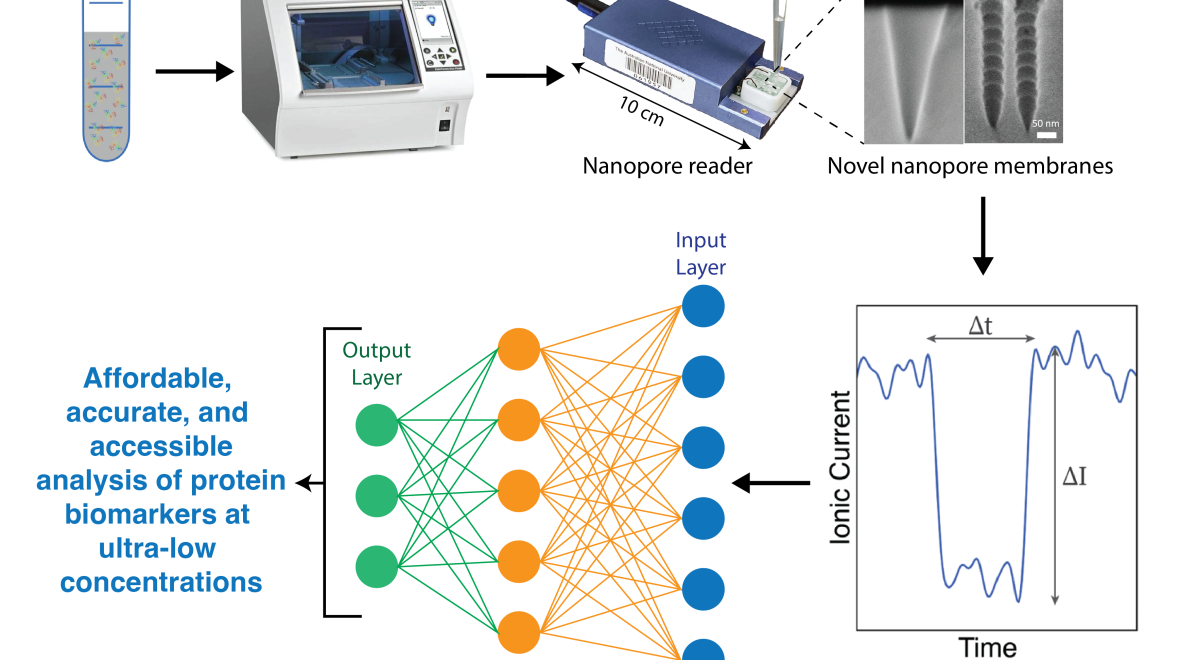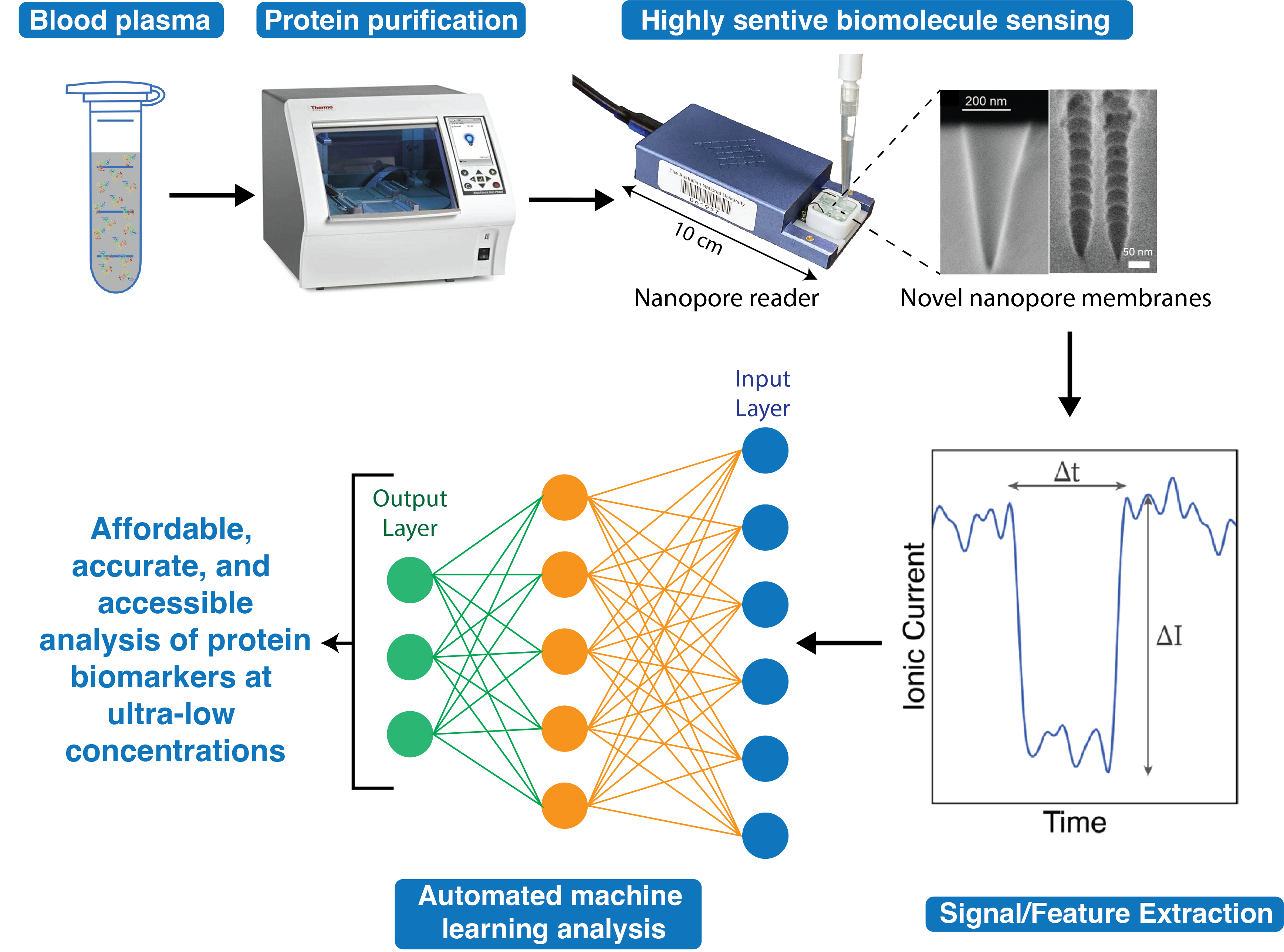Smart biomarker sensing using advanced nanopore technology and artificial intelligence

Impact Focus areas
Research area
A highly scalable, flexible and industrially viable process to fabricate solid-state nanopores in silicon dioxide, silicon oxynitride and multilayered membranes has been invented by researchers at The Australian National University (ANU). The novel method also incorporates an etching process which eliminates the need for the corrosive and toxic hydrofluoric (HF) acid currently used in nanopore fabrication. The invention allows to create more tunable devices as nanopores can be customised in their radius, depth (from 10 nm to a few microns) and a multitude of shapes. It can also customise cone opening angles from 3 to 110 degrees, which cannot be achieved with current known fabrication methods. This invention can be used to fabricate multilayered gated nanopore membranes, which have a plethora of advanced applications, and allows for new possibilities in a variety of fields including highly sensitive medical diagnostics and health monitoring.
Potential benefits
- Label-free and amplitude-free technology: Our method is simple without requiring complex chemistry or readers, thus >can be applied to the early diagnosis of disease at point-of-care.
- Ultra-sensitive: We are able to detect in the femtomolar concentration level with a high level of accuracy.
- Cost-effective, Rapid, and Accessible: Our method replaces expensive, manually operated instruments with low cost, easy-to-use, small benchtop instruments that automatically fabricate nanopores to a given size at the click of a button and makes diagnostics accessible for everyone. Versatile: Able to control nanopore shape and size.
- Scalable: Fabrication uses readily available components and materials and a manufacturing process that is suitable for industrialisation Safer: Replaces highly toxic and corrosive HF acid used in current track-etch technology with a safer, alternative, reducing risks for workers and less regulation requirements
- Stable: Allows the fabrication of robust and stable nanopores from a single pore to 1010 pores per cm2
- CMOS-compatible: Works with silicon-based CMOS-compatible membranes which can be readily integrated into devices
Figure 1: Workflow of detection of biomarkers using ANU's smart nanopore sensing technique.
Potential applications
- Molecular sensing
- Chemical and Biosensors
- Size and charge selective separation
- DNA and protein sequencing
- Nanofluidic logic devices
- Protein separation and detection
Opportunity
ANU seeks a manufacturer of diagnostic platforms (or devices that include membranes) to refine the technology in return for an option/licence agreement. The technology is effective and requires minimal development to modify it to meet specific biomarker diagnostics at ultra-low concentrations.This can be facilitated through leveraging research grant schemes in internationally and nationally.
IP status
The IP is owned by ANU and is the subject of a patent application.
Key research team
- Shankar Dutt, Post Doctoral Fellow, ANU Research School of Physics
- Patrick Kluth, Professor, ANU Research School of Physics



